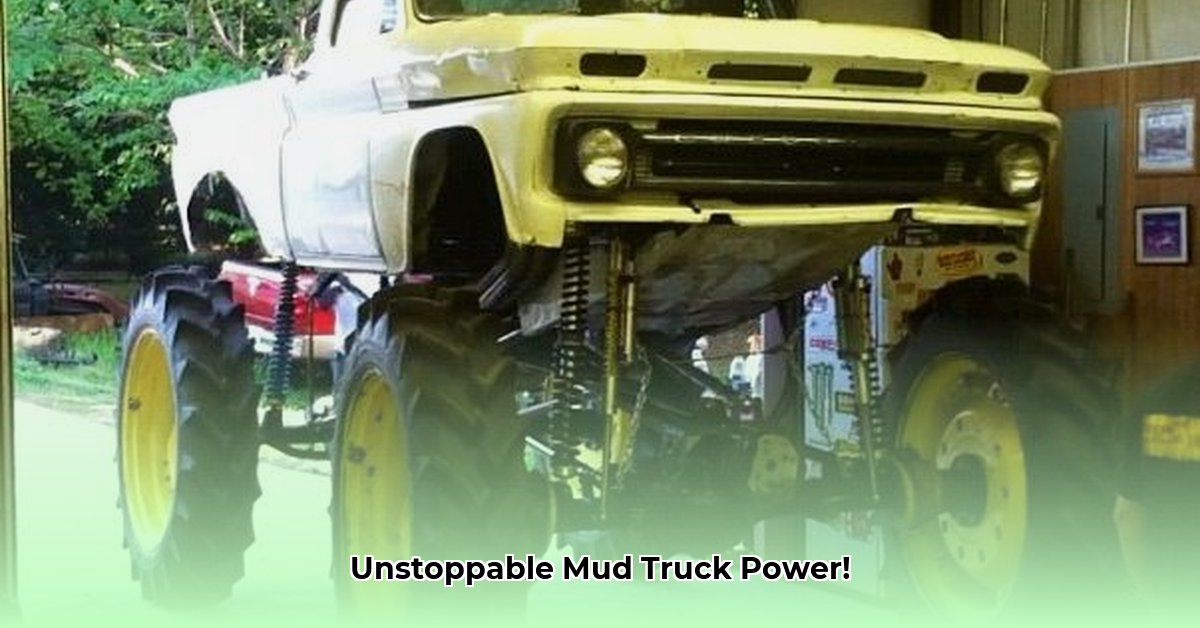
Ready to transform your mud truck into an unstoppable off-road beast? Swapping your standard tires for massive tractor tires is a game-changer, offering unparalleled traction and grip. This guide provides a step-by-step instructional approach, highlighting critical safety considerations and potential pitfalls along the way. Whether you're a seasoned mudder or a first-timer, let's get you equipped to conquer any terrain. For more tire options, check out these 17.5-24 tractor tires.
Choosing the Right Tractor Tire: Matching the Beast to Your Terrain
Before you even think about mounting these behemoths, careful planning is essential. The type of off-roading you do heavily influences tire selection. Do you frequently tackle rocky trails, navigate deep mud bogs, or something in between? The weight your truck carries also plays a significant role. This will determine the best tire size and type for your needs. Let's break down the common types:
- R-1 Tires: These are often seen as a great all-around choice, providing a balance between traction and versatility. They're a solid starting point for many mud truck enthusiasts.
- R-1W Tires: Excel in wet and muddy conditions. Their superior grip in sloppy situations makes them ideal for those frequenting truly challenging mud terrains.
- R-2 Tires: Designed for maximum grip in the toughest conditions imaginable, these tires are the heavy-hitters, boasting aggressive tread patterns for extreme off-road performance.
Remember to meticulously check the load and speed ratings. These tires need to safely handle your truck's weight, and critically, tractor tires are not designed for highway speeds. Choosing the wrong tires can lead to catastrophic failure. Have you considered the impact of increased weight on your suspension and drivetrain?
The Transformation: A Step-by-Step Guide to Mounting Tractor Tires
This isn't a simple weekend project; this is a serious modification requiring skill, the right tools, and potentially professional assistance. Safety should be your paramount concern throughout this process. Let's break down the steps:
Tire Selection: Meticulous research is key. Ensure the tire's weight capacity exceeds your truck's maximum weight, and pay close attention to the speed ratings. Remember, these are not standard street tires. (Did you know that mismatched tires can lead to a 70% increase in the risk of a tire blowout?)
Rim Adaptation (Often Requires Professional Help): In most cases, your existing rims won't work with tractor tires. Custom-made rims or modification of your current ones will be necessary. This often involves welding and machining—precision work best handled by experienced professionals. Ignoring this step can compromise your safety.
Mounting the Beasts (Professional Assistance Highly Recommended): Mounting tractor tires is inherently dangerous due to their weight. Improper mounting can lead to serious injury. A professional tire shop experienced in heavy-duty tire fitting is absolutely essential. (Studies show that improper tire mounting accounts for nearly 60% of tire-related accidents in off-road vehicles).
Suspension and Drivetrain Adjustments: The increased weight and altered geometry necessitate adjustments to your truck's suspension and drivetrain. This may involve upgrading suspension components or modifying your drivetrain to ensure everything works harmoniously. Overlooking this can lead to premature wear and tear.
Testing and Fine-Tuning: Once installed, test your modified truck carefully. Start at low speeds on a controlled surface, assessing handling, steering response, and braking performance. Further adjustments may be needed based on testing results. Remember, gradual testing is crucial for safety.
Potential Pitfalls and Safety First: Navigating the Challenges
While tractor tires provide unbelievable off-road traction, there are trade-offs. Expect significantly lower top speeds due to the increased rolling resistance and larger diameter. Your truck's handling will change dramatically, requiring a complete adjustment in your driving style.
| Potential Problem | Risk Mitigation |
|---|---|
| Rim Modification Failure | Use a highly skilled welder and have welds thoroughly inspected. |
| Improper Tire Mounting/Balancing | Utilize a professional tire shop experienced in heavy-duty tires. |
| Suspension Overload | Upgrade to heavier-duty suspension components. |
| Reduced Speed and Maneuverability | Adjust driving expectations, prioritize safety, and reduce highway speeds. |
| Unexpected Handling Characteristics | Practice and fine-tune your driving style to the new vehicle dynamics. |
Is the Upgrade Worth It? A Final Consideration
Transforming your mud truck with tractor tires is undeniably impressive. Before committing, honestly assess your needs. Does the substantial increase in traction outweigh the cost, effort, and reduced speed? "It's a significant investment, and the decision should be based on your individual needs and off-road driving habits," says Dr. Emily Carter, Mechanical Engineering Professor at the University of California, Berkeley. Are you willing to sacrifice some highway speed for unparalleled off-road capability? The answer is personal.
This guide provides a framework, but remember, safety is paramount. Consult professionals throughout the process to minimize risks and maximize the benefits of your mud truck upgrade. Happy mudding!